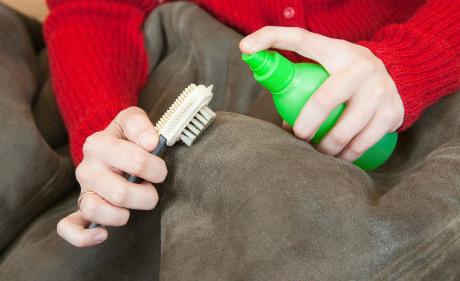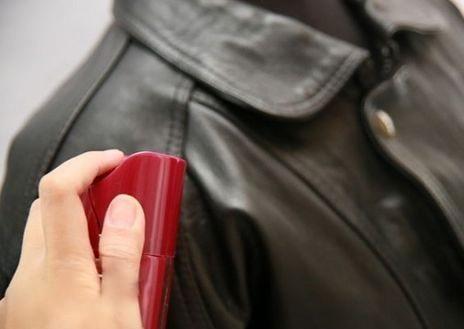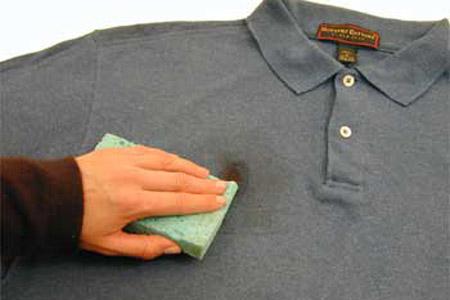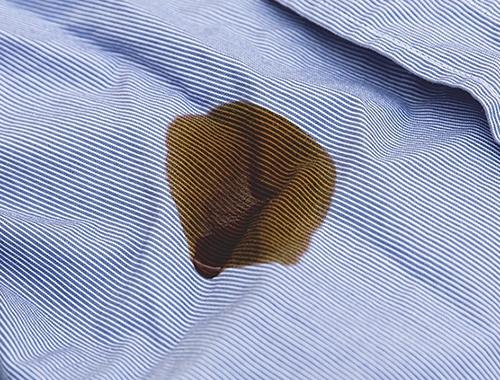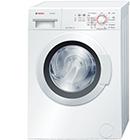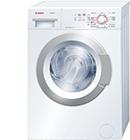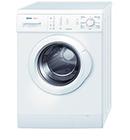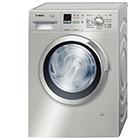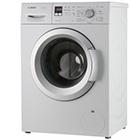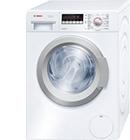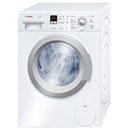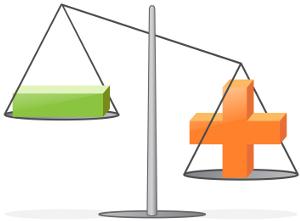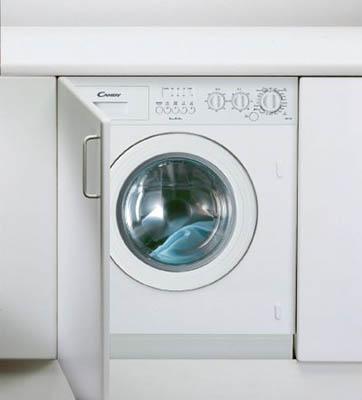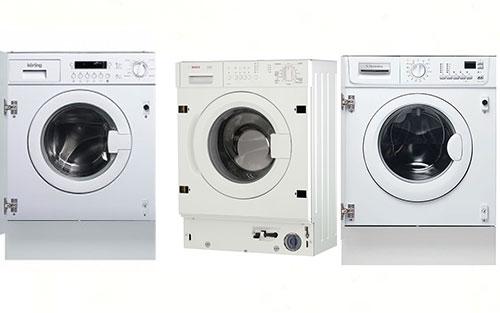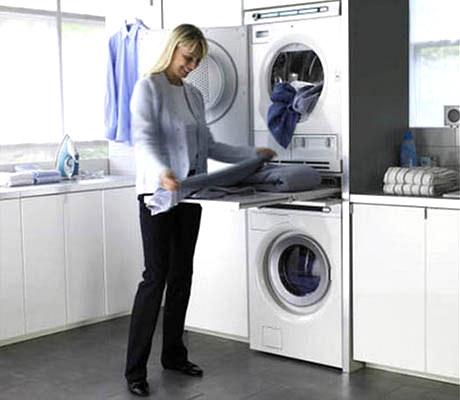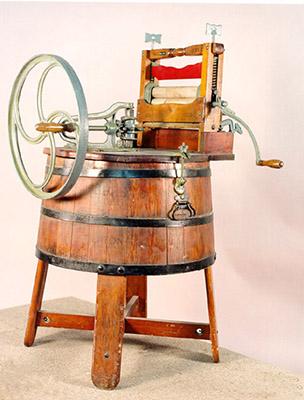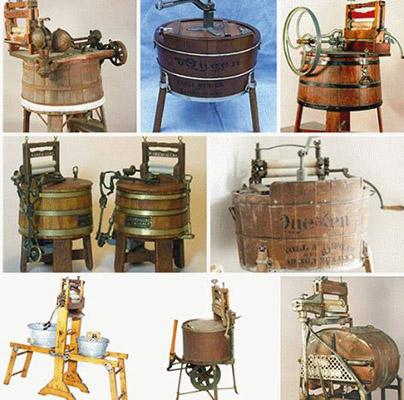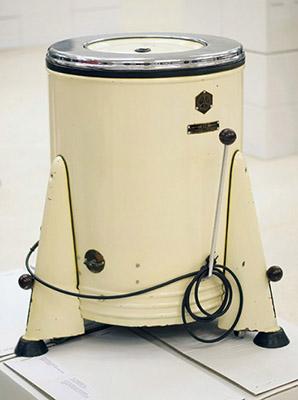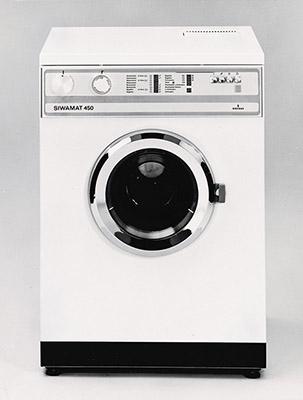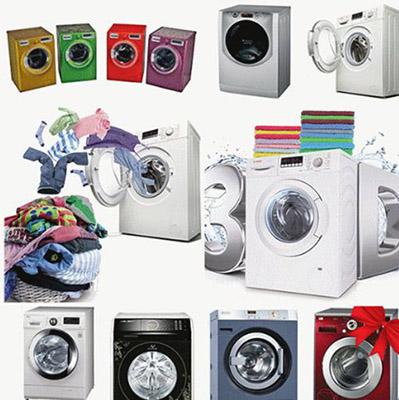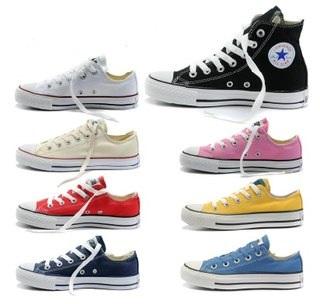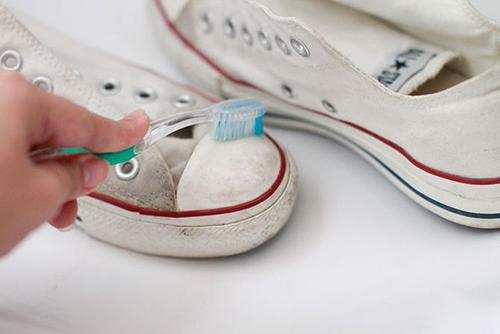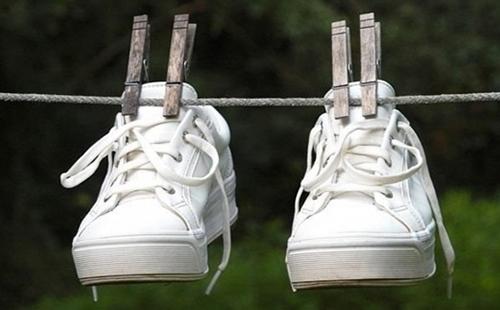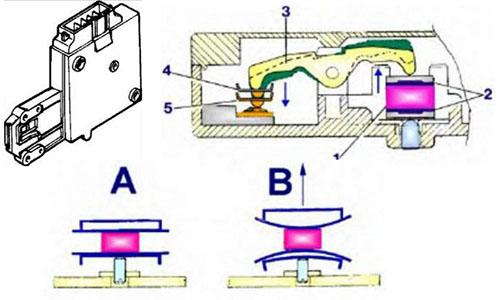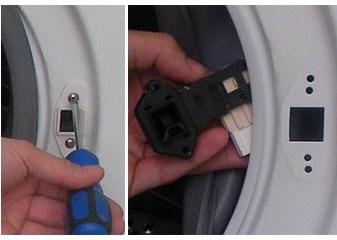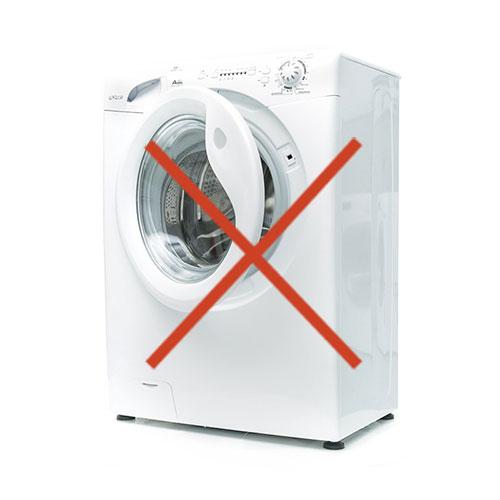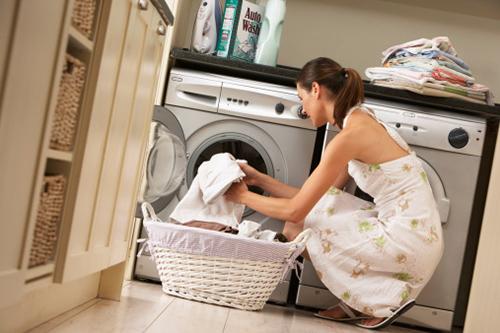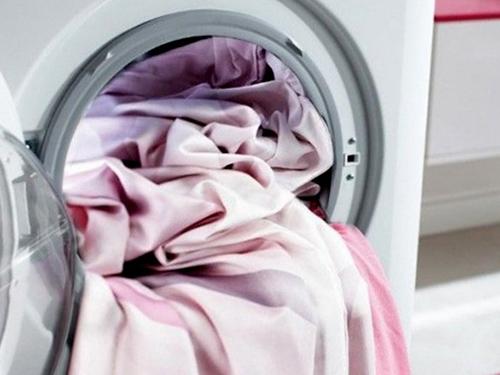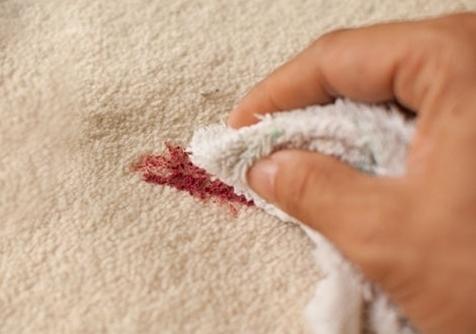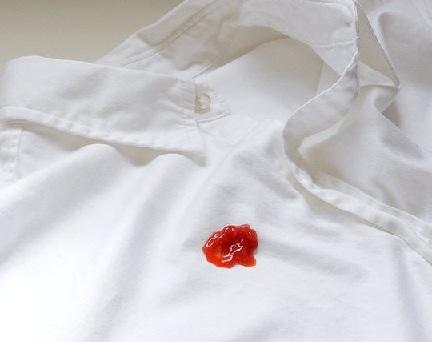Built-in washing machine in the kitchen will be an ideal option for those who prefer not to run between the kitchen and the bathroom while doing household chores. In addition, this is a good opportunity to perform the most dense layout of all household appliances and furniture, which is important for owners of small-sized housing.
In this review, we will talk about how and how you can install a washing machine in the kitchen, discuss the pros and cons of this approach, and also talk about the connection. Also, attention will be paid to embedded technology, which has a number of advantages.
Washing machine in the kitchen pros and cons

Do you need a washing machine in the kitchen? This question cannot be answered unambiguously. Someone perceives this as absolutely normal, but for someone the machine can interfere. Also It all depends on the dimensions of the kitchen and the dimensions of the bathroom.. Therefore, we will consider separately the pros and cons separately. Let's start with the positives:
- Saving space in the bathroom - as a rule, kitchen rooms are large, so installing a washing machine in the kitchen will be quite justified;
- You can do laundry and cook at the same time - and indeed, installing a machine in the kitchen will help you avoid running around the apartment. I threw towels, aprons and linen into the washing machine, dishes into the dishwasher, and the ingredients for pilaf into the slow cooker - and half of the household chores can be considered finished;
- Even the largest and deepest washing machine can be installed in the kitchen - in some bathrooms it is simply impossible to install the most capacious and bulky unit.
Looking at such obvious advantages, it begins to seem that such installation has no drawbacks. But it only seems so - and here are just a few shortcomings:
- There is simply nowhere to store dirty laundry in the kitchen - in the same bathroom, a separate tank can be adapted for this. The presence of a laundry tub in the kitchen will look at least ridiculous;
- There is nowhere to store washing powders in the kitchen - you will have to look for a separate place for them, for example, in the same bathroom. And this is again unnecessary trips to the next room;
- It is difficult to ventilate the tank after washing - it is possible to demolish the door of the loading hatch with your foot. Similar difficulties arise in embedded technology;
- A washing machine installed in the kitchen can quickly get dirty - in general, everything in the kitchen tends to quickly get dirty with random food leftovers. Therefore, the appearance of greasy spots and streaks should not be surprising;
- There are difficulties with the installation of machines with vertical loading of laundry - the set into which the machine will be built must have a reclining tabletop, which is also not very convenient.
As a result, we see that there were more disadvantages than advantages.. But these shortcomings do not scare everyone. For example, powders and a laundry bin can be stored in a separate niche in a kitchen set. The same is true for quick soiling - if the headset niche is closed with a door, then the machine will not get dirty. As for drying the tank, airing can be done at night when no one is in the kitchen.The main thing is not to demolish the open door with your feet during a midnight visit to the refrigerator for another sandwich.
Choosing a washing machine for the kitchen
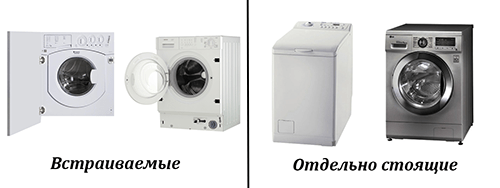
A washing machine in the kitchen under the countertop can have almost any dimensions, since kitchen furniture has quite impressive dimensions. Which washing machine can we choose for the kitchen? Here are three options:
- Embedded;
- With the possibility of embedding;
- Separately standing.
The last two options are almost the same, since the machine with the possibility of embedding and there is a free-standing machine with removable body walls.
Built-in or freestanding?
If we choose a built-in machine, then everything is simple here - we install it under the countertop, after which we hook the kitchen doors to it. Going into the kitchen, it will be very difficult to tell that somewhere there is a washing machine hiding. This is what built-in appliances are valued for.
The disadvantage of embedded models is that there are quite a few of them. That's why the probability of choosing a built-in washing machine with the required characteristics will be extremely small. It is much easier to choose something among free-standing machines, the range of which is simply amazing. Here we can find the most suitable option. After that, we just have to install the selected model in a cabinet or niche.
A freestanding machine is good because it can become built-in. There will be no fasteners for doors, but all interfering body covers can be easily removed.
Choice by size
In order to properly install the washing machine in the kitchen, you need to choose it correctly. Since we put the apparatus under the countertop, then we must provide for a margin in height - 4-5 cm is enough. The same applies to the side walls of the case - they should not touch the furniture walls. What is it for?
- In order to make the machine easier to install, it will be very difficult to level it if the upper edge of the body rests on the countertop;
- To get rid of vibrations - during the washing process, the machine should not hit the furniture and make the entire headset shake at once.
Therefore, the first thing we must do before sending for a washing machine is to measure a niche or cabinet. After that, you can safely go to the store for appliances.
When measuring, do not forget to pay attention to the protruding hatch cover - when specifying the dimensions of the equipment, its dimensions are not taken into account.
Choosing a place for installing the machine
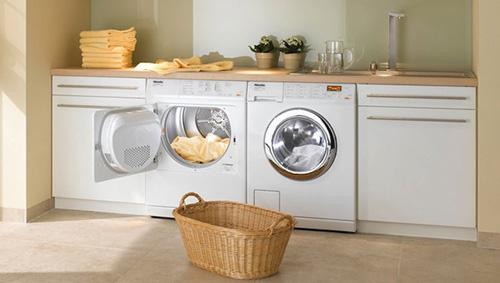
Choose a cabinet for a washing machine in the kitchen is quite simple - as a rule, this technique is installed in cabinets and niches located in the immediate vicinity of the sink. This is due to the fact that all the necessary communications pass here - water supply and sewerage. We install the socket in advance, its height should be 20-30 cm from the floor level.
If we decide to install the washing machine not next to the sink, but in another cabinet or niche, then here we will face additional difficulties - with the laying of pipes. Therefore, the best place is a cabinet near the kitchen sink.. Since we have already chosen a place for installing a washing machine, it remains to figure out how to install it correctly?
Floor installation
When choosing and installing a kitchen set, it is necessary to provide for the possibility of installing a washing machine on the floor.In the passports for the equipment they write that the installation should be carried out only on stable surfaces. If we install the machine on the plinth of a kitchen set, then we will encounter vibrations that will spread to all furniture elements.
If the machine is on the floor, then we get:
- Reliable balancing of equipment is very important for the operation of the imbalance control system;
- Transfer of vibrations to the floor - your furniture with kitchen utensils will not tremble during the spinning process.
Plinth installation
There is no way to install the machine on the floor? Then take measures to strengthen the basement so that it stands stably and does not move.You will also need a more precise adjustment of the washing machine at the installation site - this is done using adjustable legs and a building level.
By the way, it is very easy to hide the washing machine in the kitchen - for this you need to install it so that the front part of the device is hidden behind the doors of the headset. If the colors of appliances and furniture match or harmonize successfully, then the front part can not be hidden anywhere, and unnecessary doors can be removed. The second option is good because we will always see what is happening with the washing machine.
Do-it-yourself installation of a washing machine in the kitchen
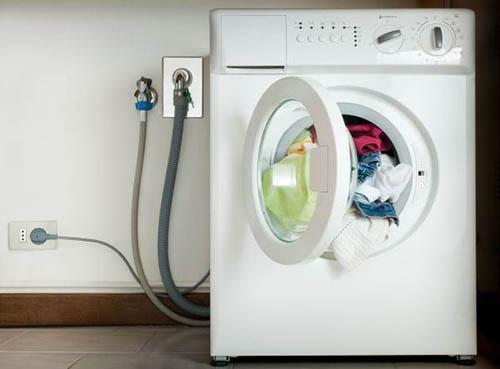
Kitchen set and appliances bought - what's next? Now we need to figure out how to install the washing machine in the kitchen. To do this, we will need to make every effort, since the connection will have to be made inside the cabinets. All work will be carried out in several stages:
- Preparation of the installation site;
- Modernization of the sewer system to connect the drain;
- Insertion into the water supply;
- Installation of an electrical outlet;
- Installation and alignment of the machine.
Prepare all the tools and assemblies in advance so that you do not have to rush between toolboxes, the kitchen, and the nearest plumbing store.
Training
The installation site must be carefully prepared. We check if it is possible to stretch the hoses. If this is not possible, we arm ourselves with a drill and go through the holes to the adjacent cabinet, in which the sink is located - here we will find a sink and plumbing drain system.
Siphon installation
At the next stage, we need a siphon with a pipe to connect the washing machine. In some cases, it is necessary to lengthen the drain hose - sometimes it simply does not reach the siphon. Having connected the hose to the sewer, you should make sure that the connection is tight. Otherwise, you will have to enjoy unpleasant odors and fight leaks.
Insertion into the water supply
Next, we need to crash into the water supply. To do this, we determine where the pipe passes, turn off the water and install it in the pipe section faucet tee for connecting a washing machine. We connect an emergency tap and a water supply hose to the tee. It is impossible to do without a tap, as it will allow us to quickly turn off the water supply to the washing machine in case of emergency. At the same time, we can safely continue to use tap water. If necessary, we also put a filter here.
Socket installation
If there is no outlet near the installation site, then it must be done by finding the nearest junction box. We lay the wires in the cable channel or directly into the wall, which depends on personal preferences and on the design of the kitchen (if a final repair has been carried out here, then you should not spoil it, it is best to think about installing an outlet in advance, at the stage of creating a kitchen project).
Connecting a washing machine in the kitchen
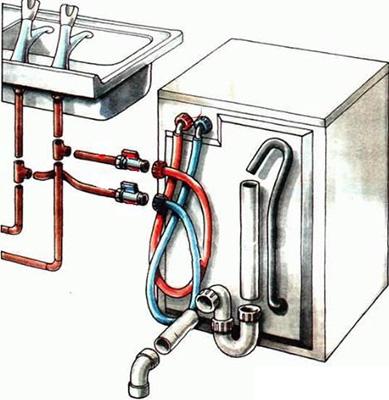
Now we are ready to connect the washing machine in the kitchen. It remains only to perform the installation itself. To do this, we unscrew the transport bolts and remove them in a secluded place. Do not rush to fully push the washing machine into a niche - We still need to connect, and this will require free space.
First, we stretch the inlet hose into the niche and wind it onto the washing machine. After that, we connect the device to the drain by stretching the drain hose to the siphon. The next step is to connect the washing machine to an electrical outlet. Now you can move the machine to its regular place.
When pushing the machine to the installation site, carefully pull the drain and inlet hoses towards you - let the excess be in the next cabinet, under the sink. Otherwise, they may become pinched, resulting in problems with the operation of the machine.
Having installed the machine in a regular place, we put a building level on it and adjust its position. By twisting the legs, we achieve a stable position of the body - air bubbles should stop in the middle of the window. After that, we can open the water tap and start the test wash.

